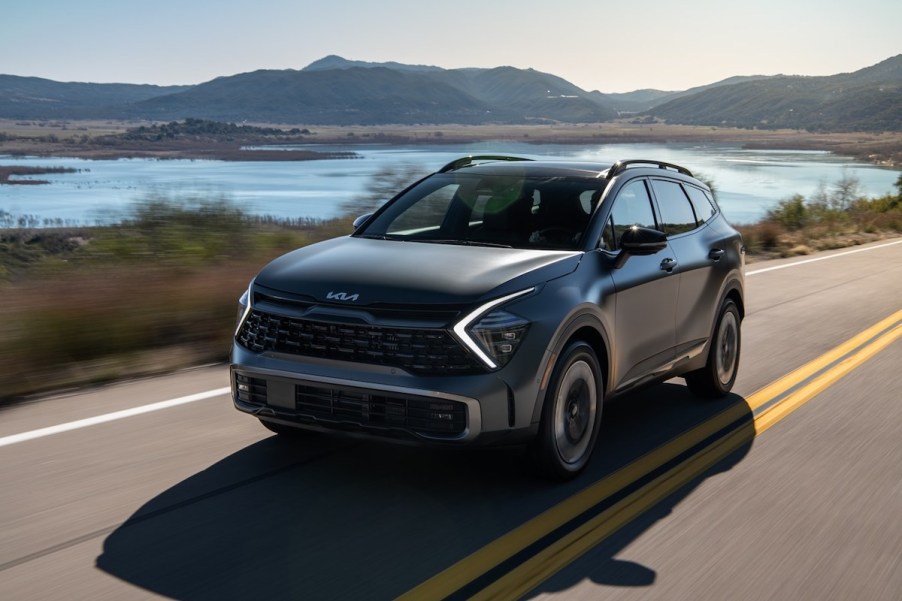
5 Advantages the 2023 Kia Sportage PHEV Has Over the Mitsubishi Outlander PHEV
With gasoline prices rising, more people are looking for relief by checking into the electric vehicle industry, but not everyone is ready to take the plunge and go all out. Hybrids are great options, but they don’t prepare you for the charging aspect of EVs. A PHEV is a perfect solution, but it’s not quite as popular as it should be in the industry. The Kia Sportage and its rival, the Mitsubishi Outlander, are two good examples.
When you compare the two, the Kia offers more than what its rival does. Let’s look at five advantages the Sportage PHEV has over the Outlander.
1. Better fuel economy ratings

Both models have the plug-in hybrid powertrain, which means you can switch between gasoline and electric power as needed. The fact that you can plug it in before you leave allows you to get better fuel economy because the battery is ready to go right away and doesn’t have to wait to get charged by the engine as you drive down the road.
With the Sportage, that’s especially true. Kia offers a total of 84 MPGe combined, while the Outlander only provides around 74 MPGe overall. On the gasoline engine, you can expect 35 MPGe combined, according to Kia’s website.
2. More electric driving range for the 2023 Kia Sportage PHEV
As with fuel economy, the PHEV infrastructure also helps with driving range. On the 2023 Kia Sportage, you get about 32-34 miles, while the Outlander offers only 24 miles when driving on electric only.
The battery in the Kia can be fully charged in two hours if you use a 240-volt charger. According to Edmund’s, the Outlander will take around four hours with the same charger.
3. More horsepower and torque
Kia’s Sportage has a 1.6-liter turbocharged four-cylinder gasoline engine paired with a fully parallel hybrid system. Combined, its powertrain will produce 261 hp and 258 lb-ft of torque.
When you compare what Mitsubishi’s Outlander offers, you see a 2.4-liter Inline-four paired with an electric motor system that only generates 221 hp and 147 lb-ft of torque, according to Mitsubishi’s website.
4. More towing capacity
As more vehicles hit the market with either an electric powertrain or a hybrid one, we’re starting to see that they can perform just like their gasoline-powered counterparts. One area that shows this is a car’s towing capacity.
The Sportage offers about 2,000 lbs of towing capacity. That’s quite a bit more than the Outlander, which is only rated for 1,500 lbs. Considering towing does affect EV driving ranges, these amounts are pretty good.
5. More ground clearance goes to the 2023 Kia Sportage PHEV
Neither the Outlander nor the Sportage is known for heavy off-roading, but that doesn’t mean ground clearance isn’t an essential feature for some drivers. Some people need a vehicle with a higher stance simply due to the harsh snowy areas they live in, while others have better driving confidence when they sit up higher in their seats and can see the road better.
For the Kia, you can expect about 8.3-inches of space between the vehicle’s underside and the pavement. Compare that to Mitsubishi’s Outlander, and you’ll notice quite a difference since this model only has 7.3-inches of ground clearance.
While both models offer some excellent features, the Kia Sportage has the edge over the Mitsubishi Outlander in five different areas. It has more towing capacity, more ground clearance, better fuel economy, more electric driving range, and better-combined horsepower and torque.


